Cholesterol-depleting statin drugs protect postmitotically differentiated human neurons against ethanol- and human immunodeficiency virus type 1-induced oxidative stress in vitro
- PMID: 17108035
- PMCID: PMC1797499
- DOI: 10.1128/JVI.01843-06
Cholesterol-depleting statin drugs protect postmitotically differentiated human neurons against ethanol- and human immunodeficiency virus type 1-induced oxidative stress in vitro
Abstract
The majority of human immunodeficiency virus type 1 (HIV-1)-infected individuals are either alcoholics or prone to alcoholism. Upon ingestion, alcohol is easily distributed into the various compartments of the body, particularly the brain, by crossing through the blood-brain barrier. Both HIV-1 and alcohol induce oxidative stress, which is considered a precursor for cytotoxic responses. Several reports have suggested that statins exert antioxidant as well as anti-inflammatory pleiotropic effects, besides their inherent cholesterol-depleting potentials. In our studies, postmitotically differentiated neurons were cocultured with HIV-1-infected monocytes, T cells, or their cellular supernatants in the presence of physiological concentrations of alcohol for 72 h. Parallel cultures were pretreated with statins (atorvastatin and simvastatin) with the appropriate controls, i.e., postmitotically differentiated neurons cocultured with uninfected cells and similar cultures treated with alcohol. The oxidative stress responses in the presence/absence of alcohol in these cultures were determined by the production of the well-characterized oxidative stress markers, 8-isoprostane-F2-alpha, total nitrates as an indicator for various isoforms of nitric oxide synthase activity, and heat shock protein 70 (Hsp70). An in vitro culture of postmitotically differentiated neurons with HIV-1-infected monocytes or T cells as well as supernatants from these cells enhanced the release of 8-isoprostane-F2-alpha in the conditioned medium six- to sevenfold (monocytes) and four- to fivefold (T cells). It was also observed that coculturing of HIV-1-infected primary monocytes over a time period of 72 h significantly elevated the release of Hsp70 compared with that of uninfected controls. Cellular supernatants of HIV-1-infected monocytes or T cells slightly increased Hsp70 levels compared to neurons cultured with uninfected monocytes or T-cell supernatants (controls). Ethanol (EtOH) presence further elevated Hsp70 in both infected and uninfected cultures. The amount of total nitrates was significantly elevated in the coculture system when both infected cells and EtOH were present. Surprisingly, pretreatment of postmitotic neurons with clinically available inhibitors of HMG-coenzyme A reductase (statins) inhibited HIV-1-induced release of stress/toxicity-associated parameters, i.e., Hsp70, isoprostanes, and total nitrates from HIV-1-infected cells. The results of this study provide new insights into HIV-1 neuropathogenesis aimed at the development of future HIV-1 therapeutics to eradicate viral reservoirs from the brain.
Figures

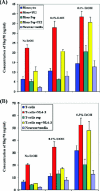
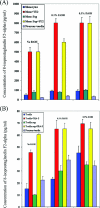
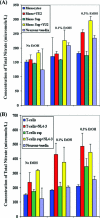
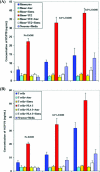
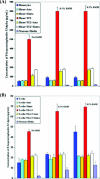
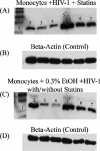
References
-
- Acheampong, E., M. Mukhtar, Z. Parveen, N. Ngoubilly, N. Ahmad, C. Patel, and R. J. Pomerantz. 2002. Ethanol strongly potentiates apoptosis induced by HIV-1 proteins in primary human brain microvascular endothelial cells. Virology 304:222-234. - PubMed
-
- Agnew, L. L., M. Kelly, J. Howard, S. Jeganathan, M. Batterham, R. A. Ffrench, J. Gold, and K. Watson. 2003. Altered lymphocyte heat shock protein 70 expression in patients with HIV disease. AIDS 17:1985-1988. - PubMed
-
- Ancuta, P., A. Moses, and D. Gabuzda. 2004. Transendothelial migration of CD16+ monocytes in response to fractalkine under constitutive and inflammatory conditions. Immunobiology 209:11-20. - PubMed
-
- Apel, K., and H. Hirt. 2004. Reactive oxygen species: metabolism, oxidative stress, and signal transduction. Annu. Rev. Plant Biol. 55:373-399. - PubMed
Publication types
MeSH terms
Substances
Grants and funding
LinkOut - more resources
Full Text Sources
Medical
Miscellaneous

